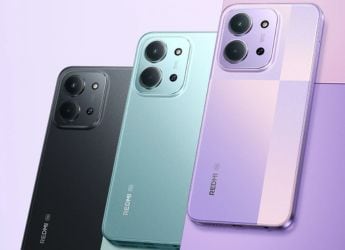- Home
- Science
- Science News
- New Mind Reading Technology Claimed to Outperform Previous Efforts
New Mind-Reading Technology Claimed to Outperform Previous Efforts

Photo Credit: Toyohashi University of Technology
Scientists have developed a new mind-reading technology that can predict a person's thoughts by analysing their brainwaves, an advance that may allow speech-impaired people to communicate.
The technology can recognise the numbers zero to nine with 90 percent accuracy using electroencephalogram (EEG) readings while the subject utters the numbers.
It can also recognise 18 types of Japanese monosyllables from EEG signals with 60 percent accuracy, demonstrating the possibility of an EEG-activated typewriter in the near future.
The research group from Toyohashi University of Technology in Japan collected EEG data of subjects speaking Japanese digits and monosyllables. Using this data, the group conducted digit and monosyllable recognition experiments.
Up until now, speech decoding via EEG signals has been inhibited by a lack of data to allow the use of powerful algorithms based on deep learning or other types of machine learning.
The research group has developed a different research framework that can achieve high performance with a small training dataset.
The new framework is based on holistic pattern recognition using category theory, or composite mapping, in which a dual space and a tensor space including exterior algebra are introduced.
In the experiment of spoken-digit recognition from EEG signals, 90 percent recognition accuracy was achieved.
At the same time, 61 percent accuracy in 18 Japanese monosyllable recognition was achieved, outperforming previous research efforts.
Humans have sufficient intelligibility of sentences with an 80 percent monosyllable recognition rate.
Researchers aim to develop a brain computer interface that recognises unvoiced speech, or speech imagery. This technology may enable handicapped people who have lost the ability of voice communication to speak once again.
It is also expected that the technology would give a healthy person the most natural interface without any limitations.
The research group plans to develop a device that can be easily operated with fewer electrodes and connected to smartphones within the next five years.
Get your daily dose of tech news, reviews, and insights, in under 80 characters on Gadgets 360 Turbo. Connect with fellow tech lovers on our Forum. Follow us on X, Facebook, WhatsApp, Threads and Google News for instant updates. Catch all the action on our YouTube channel.
Related Stories
- Samsung Galaxy Unpacked 2025
- ChatGPT
- Redmi Note 14 Pro+
- iPhone 16
- Apple Vision Pro
- Oneplus 12
- OnePlus Nord CE 3 Lite 5G
- iPhone 13
- Xiaomi 14 Pro
- Oppo Find N3
- Tecno Spark Go (2023)
- Realme V30
- Best Phones Under 25000
- Samsung Galaxy S24 Series
- Cryptocurrency
- iQoo 12
- Samsung Galaxy S24 Ultra
- Giottus
- Samsung Galaxy Z Flip 5
- Apple 'Scary Fast'
- Housefull 5
- GoPro Hero 12 Black Review
- Invincible Season 2
- JioGlass
- HD Ready TV
- Laptop Under 50000
- Smartwatch Under 10000
- Latest Mobile Phones
- Compare Phones
- OPPO A6x 5G
- Samsung Galaxy Z TriFold
- Poco F8 Ultra
- Poco F8 Pro
- Huawei Mate 80 RS Master Edition
- Huawei Mate 80 Pro Max
- Huawei Mate 80 Pro
- Huawei Mate 80
- Asus ProArt P16
- MacBook Pro 14-inch (M5, 2025)
- Poco Pad M1
- Poco Pad X1
- Just Corseca Skywatch Pro
- Honor Watch X5
- Acerpure Nitro Z Series 100-inch QLED TV
- Samsung 43 Inch LED Ultra HD (4K) Smart TV (UA43UE81AFULXL)
- Asus ROG Ally
- Nintendo Switch Lite
- Haier 1.6 Ton 5 Star Inverter Split AC (HSU19G-MZAID5BN-INV)
- Haier 1.6 Ton 5 Star Inverter Split AC (HSU19G-MZAIM5BN-INV)














